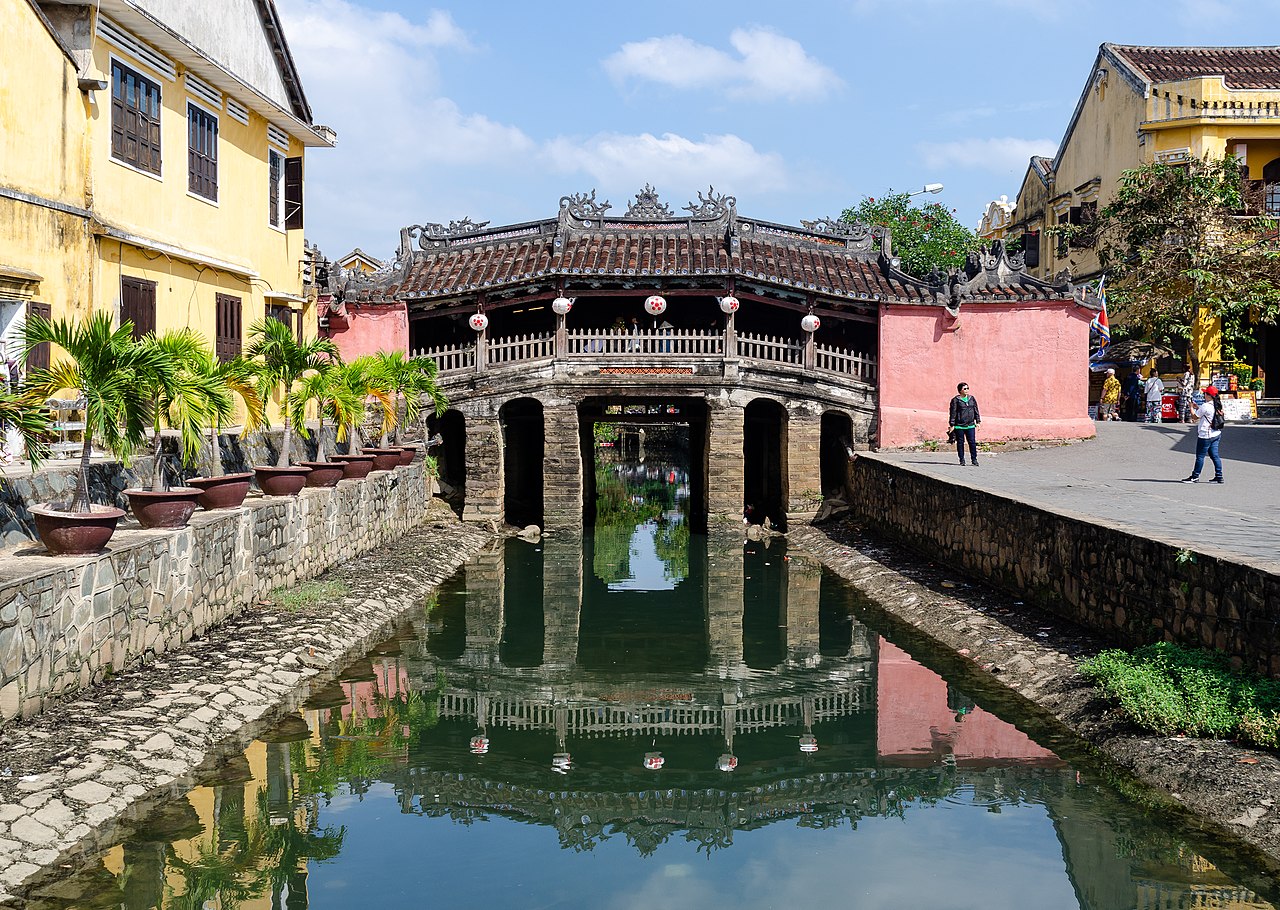The Japanese Covered Bridge, also known as Cau Chua Pagoda or Lai Vien Kieu, is an iconic symbol of Hoi An Ancient Town in Vietnam. This beautifully preserved wooden bridge dates back to the 18th century and is one of the most well-known historical landmarks in the town.
The Japanese Covered Bridge spans over a small canal that connects two streets in Hoi An’s old quarter, Tran Phu Street and Nguyen Thi Minh Khai Street. It was originally constructed by the Japanese community living in Hoi An during the early 17th century. The bridge served as a means to connect the Japanese community on one side of the canal with the Chinese community on the other side.
One of the most distinctive features of the Japanese Covered Bridge is its unique architectural style. The bridge is a combination of Japanese, Vietnamese, and Chinese architectural elements, reflecting the multicultural influences present in Hoi An during that period. It is characterized by a graceful curve, with a steep-pitched roof that is covered with terracotta tiles. Inside the bridge, there is a small shrine dedicated to the god Tran Vo Bac De, believed to protect the bridge and ensure safe passage for travelers.
At either end of the bridge, there are small pavilions with wooden benches where visitors can rest and enjoy views of the surrounding area. The bridge is also adorned with intricate carvings and decorative motifs, including sculptures of monkeys and dogs, which are considered symbols of protection and good luck in Asian culture.
The Japanese Covered Bridge has undergone several renovations and restorations over the centuries to ensure its preservation. However, its original architectural integrity and historical significance have been carefully maintained, making it a popular tourist attraction and a symbol of Hoi An’s rich cultural heritage.
Today, the Japanese Covered Bridge is not only a picturesque landmark but also a testament to the enduring spirit of cross-cultural exchange and cooperation. It serves as a reminder of Hoi An’s vibrant history as a bustling international trading port and its role as a melting pot of diverse cultures and traditions. Visitors to Hoi An can stroll across the bridge, admire its beauty, and learn about its fascinating history, immersing themselves in the charm and ambiance of this enchanting ancient town.



